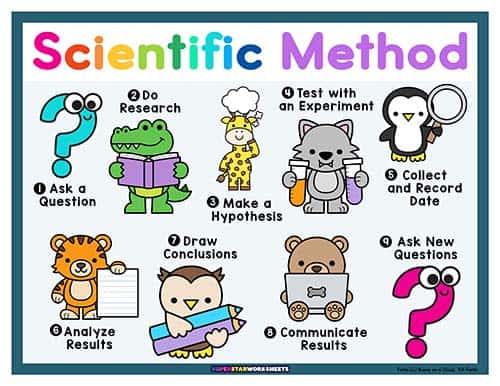
Scientific Method Worksheets are free printable science activities designed to teach the fundamental steps of scientific inquiry. These engaging and interactive downloadable PDF sheets include interactive crossword puzzles, cut-and-paste activities, colorful posters, and vocabulary-building exercises perfect for practicing science with homeschool families and classroom teachers.
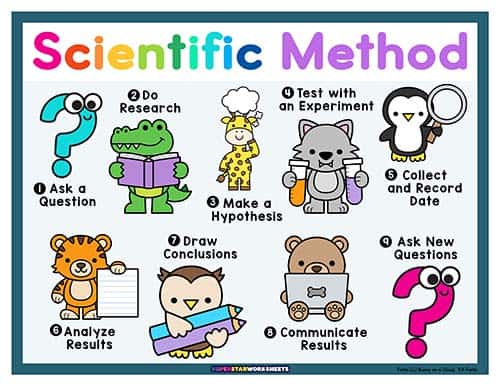
Scientific Method Poster Printable
Easily show the steps involved in the scientific method with this engaging printable. This worksheet shows all nine steps with adorable visual graphics your students will love!
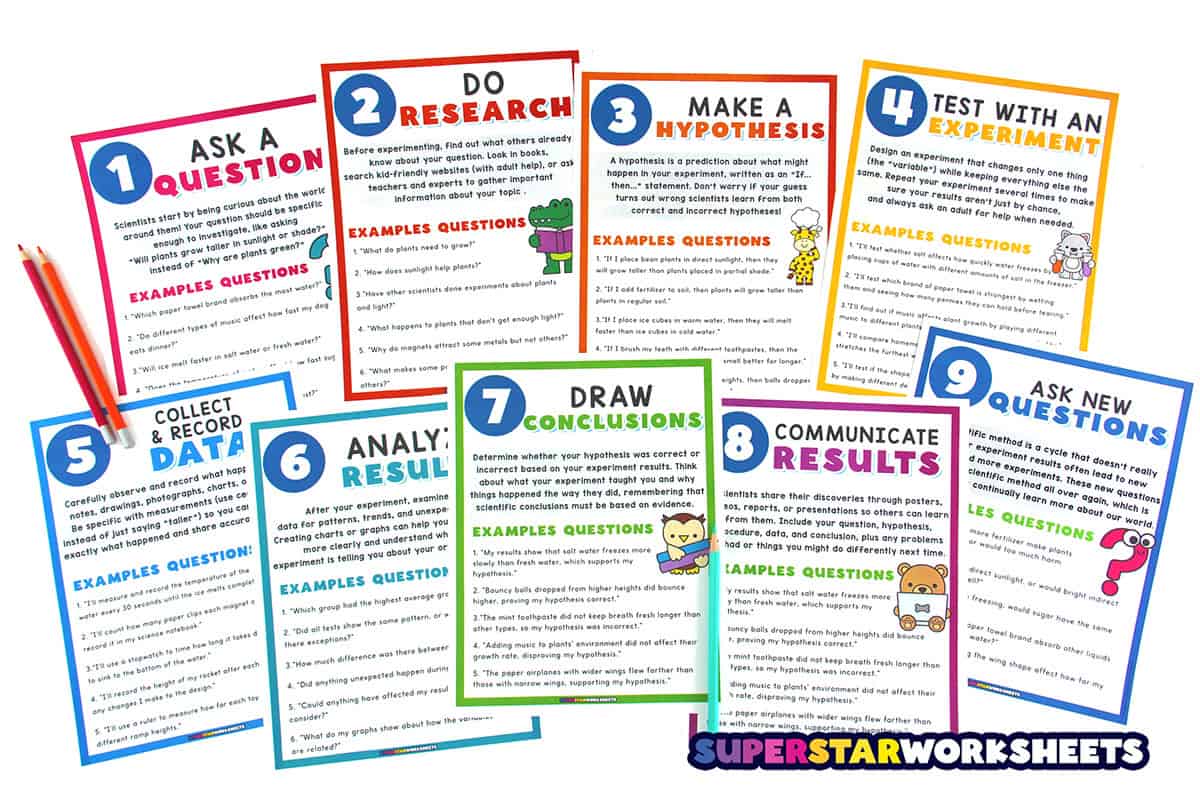
Scientific Method Worksheets
These teaching tools can be adapted for both homeschool and traditional classroom settings. To get started, you’ll need basic supplies, including the printed worksheets, pencils or pens for students, child-safe scissors for cutting activities, and optionally laminating sheets or clear sheet protectors to make the materials reusable.
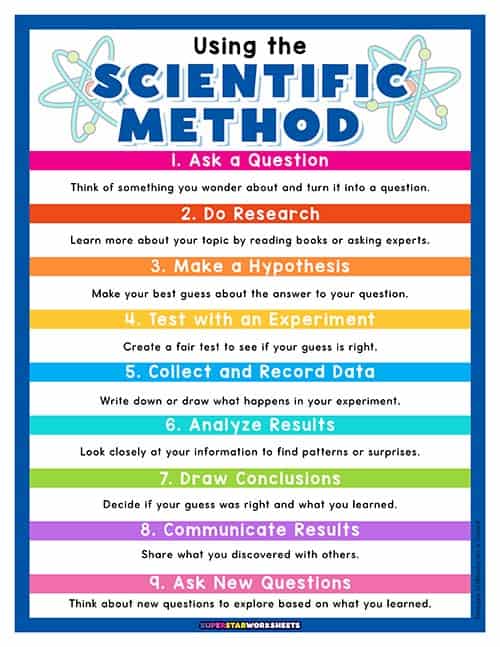
Scientific Method Poster
This reference poster displays all nine steps of the scientific method in a clear, sequential format with atom-themed graphics. Each step includes a brief description of what students should do, creating a complete overview of the scientific process.
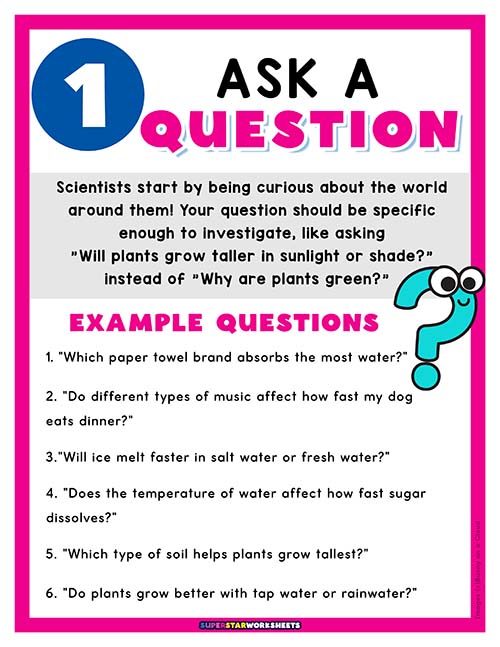
Scientific Method Ask a Question
This poster focuses on step 1 of the scientific method, teaching students how to formulate good scientific questions. The poster includes six concrete example questions that demonstrate proper scientific inquiry formatting.
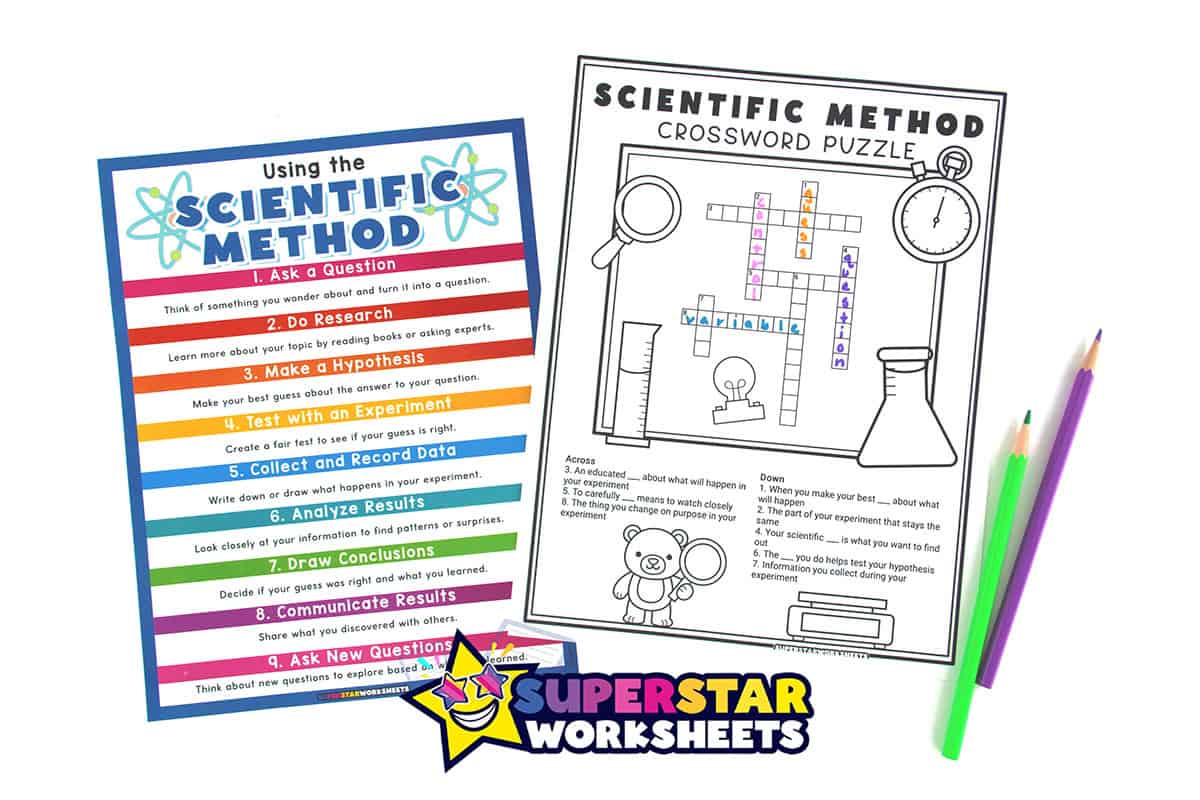
Scientific Method Worksheet PDF
Teachers can implement these worksheets individually for focused learning or as part of larger science units and experiments. The worksheets work excellently as pre-experiment planning tools, helping students organize their thoughts before conducting actual investigations. They’re also valuable for post-experiment reflection, allowing students to document their findings and conclusions. For more hands-on scientific learning, check out our Science Learning Pack!
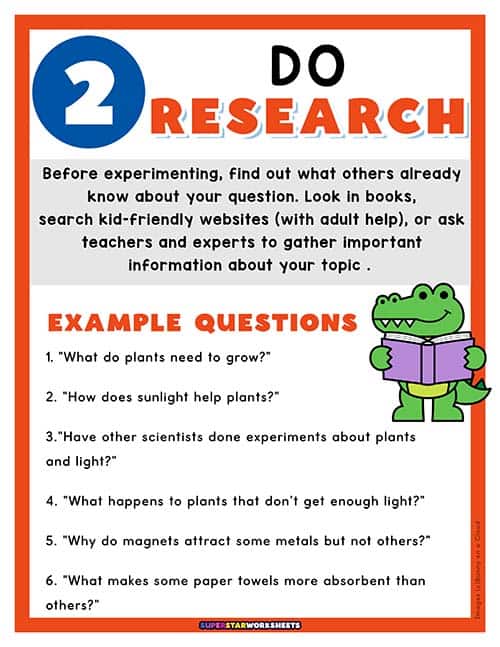
Scientific Method Research
This poster covers step 2 of the scientific method, guiding students on how to conduct background research before experimenting. It teaches students to gather existing knowledge from books, websites, and experts to better understand their topic before testing.
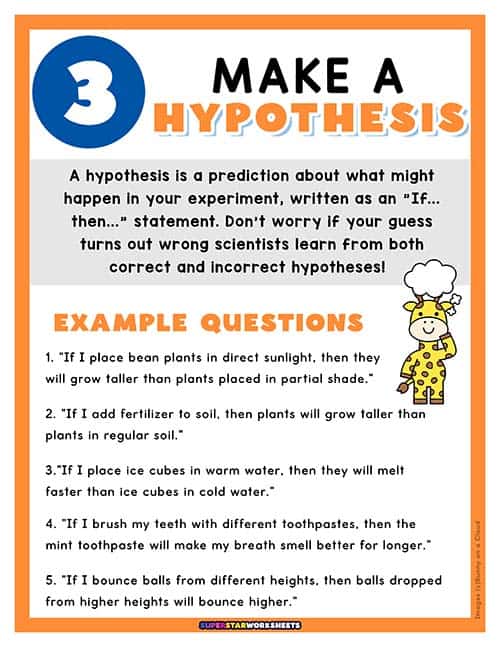
Scientific Method Hypothesis
This poster explains step 3 of the scientific method, teaching students how to write proper “If…then…” hypothesis statements. The poster includes specific hypothesis examples that demonstrate proper scientific prediction formatting.
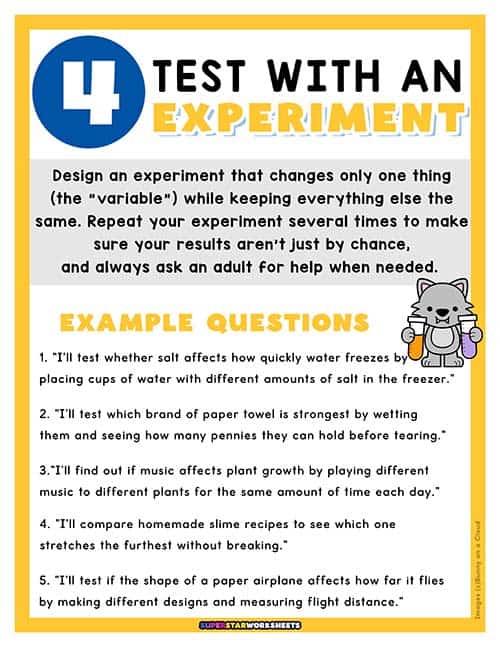
Scientific Method Experiment
This detailed poster explains step 4 of the scientific method, guiding students through proper experimental design principles. It teaches the importance of controlling variables, repeating experiments, and ensuring fair testing procedures while always prioritizing safety. Try experimenting with leaves this fall!
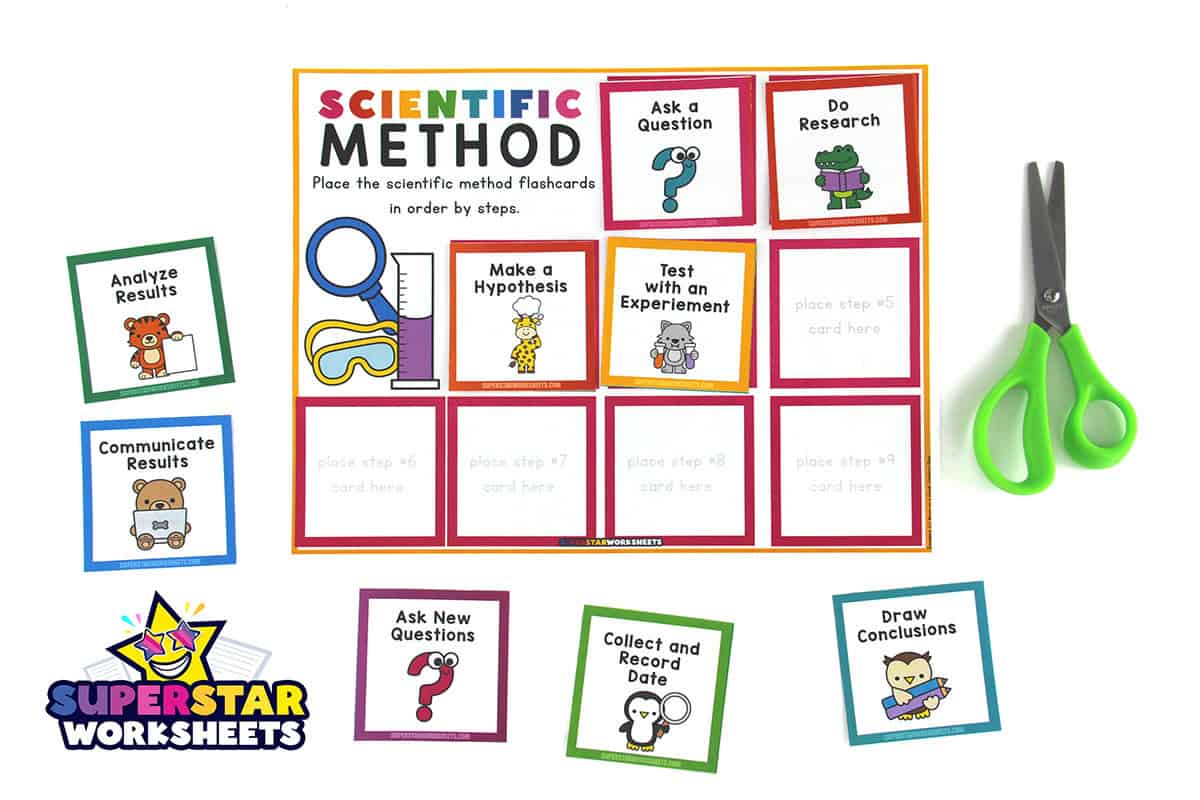
What is the Scientific Method?
The scientific process, also known as the scientific method, is a systematic approach to understanding the natural world through observation, questioning, and experimentation. It typically involves several key steps: making observations about the world around us, asking questions based on those observations, forming hypotheses (educated guesses about what might happen), designing and conducting experiments to test those hypotheses, analyzing results, and drawing conclusions.
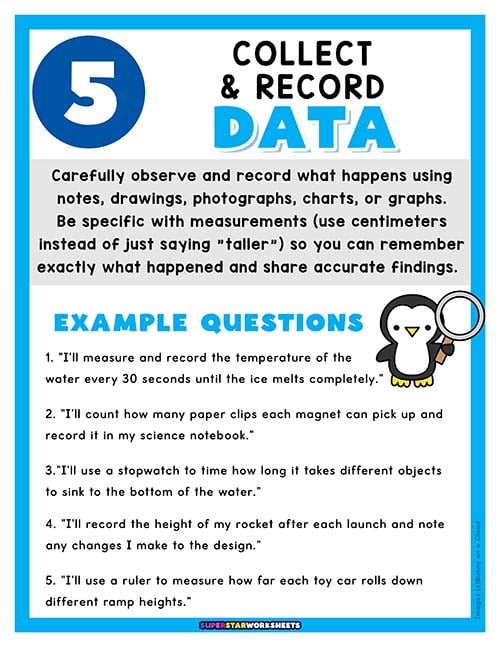
Scientific Method Collect & Record Data
This instructional poster details step 5 of the scientific method, teaching students proper data collection and recording techniques. It emphasizes the importance of accurate measurements, specific observations, and detailed record-keeping using various methods like charts, graphs, and photographs.
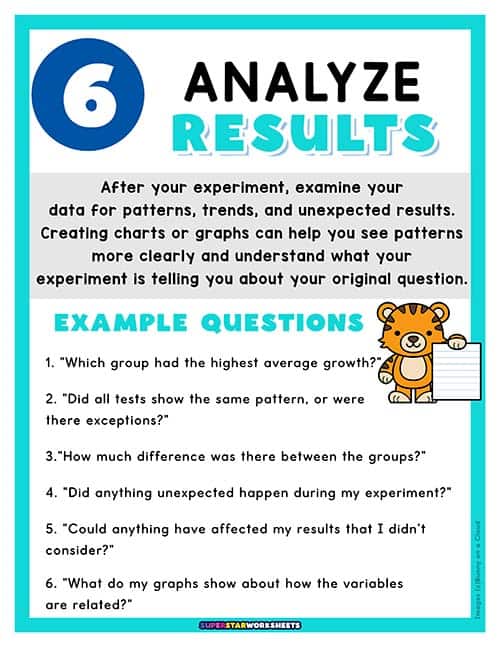
Scientific Method Analyze Results
A poster explaining step 6 of the scientific method with clear instructions and example questions for analyzing experimental data. Students learn how to examine their results for patterns, trends, and unexpected outcomes while understanding the importance of data interpretation.
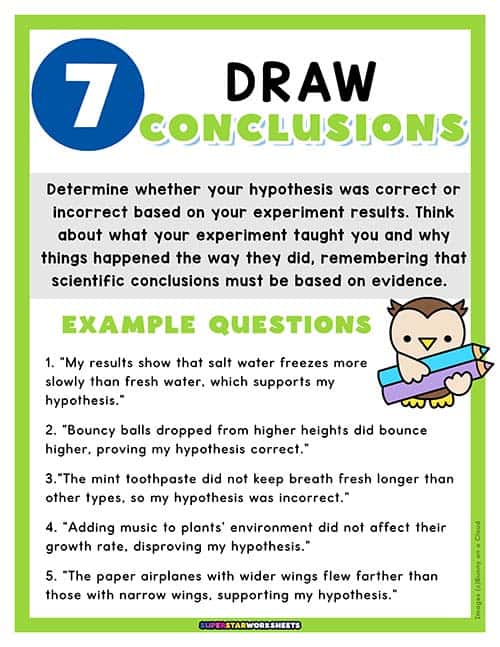
Scientific Method Draw Conclusions
This educational poster focuses on step 7 of the scientific method, teaching students how to interpret their experimental results and determine if their hypothesis was correct. It includes example conclusion statements that model proper scientific reasoning.
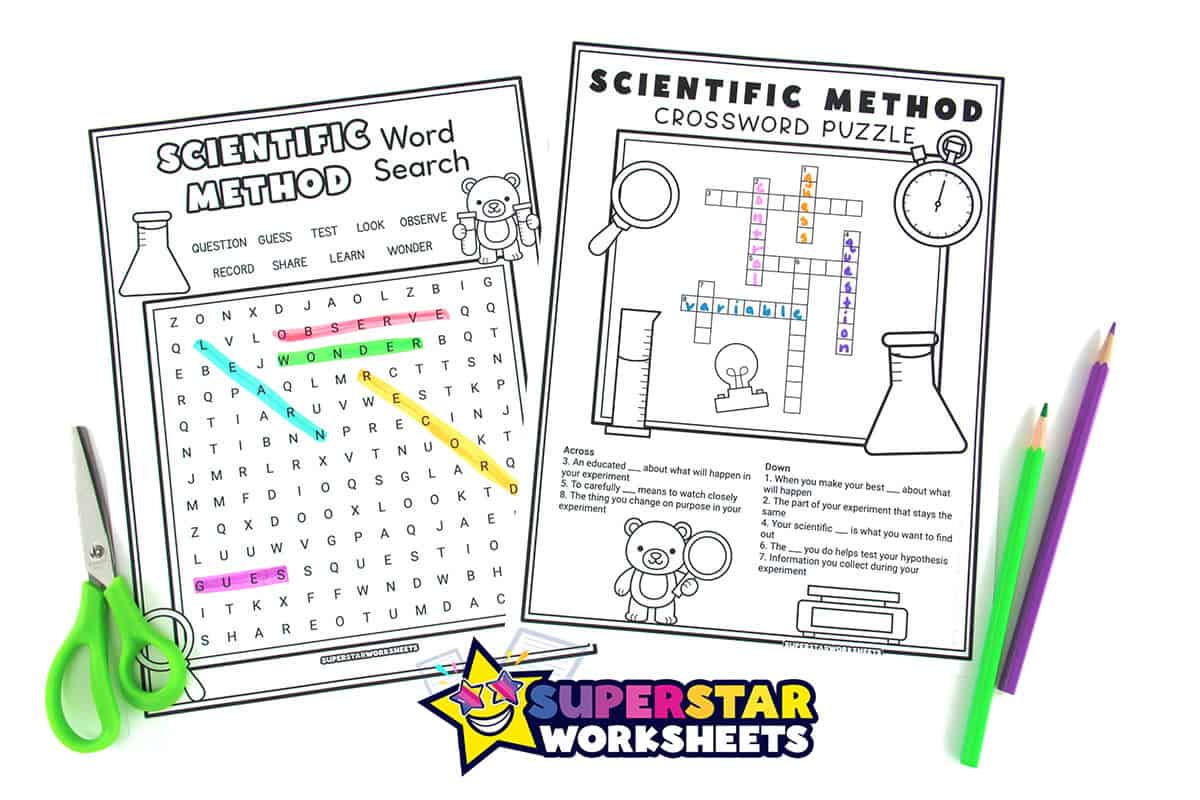
How to Teach the Scientific Method
The scientific process should be introduced gradually, starting with simple observations and questions in early elementary years (ages 5-7) and building complexity as students mature. Begin with hands-on activities that naturally incorporate scientific thinking. As students progress, introduce more formal hypothesis formation and data collection methods, and encourage students to ask “why” and “what if” questions about their observations.
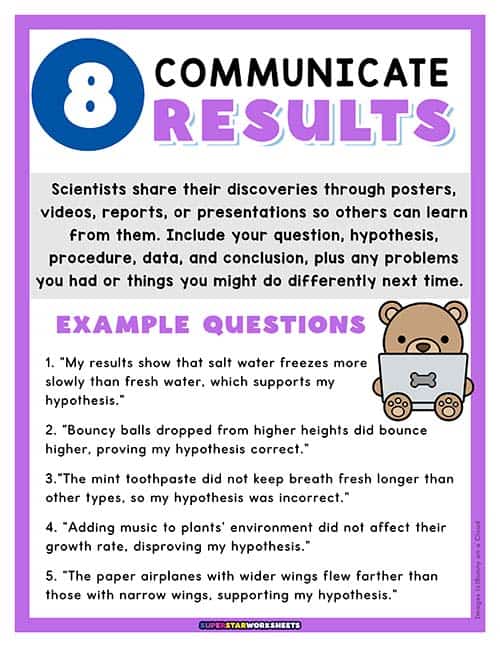
Scientific Method Communicate Results
This poster explains step 8 of the scientific method, showing students how scientists share their discoveries with others. It outlines various ways to present findings through posters, reports, and presentations while emphasizing what information should be included. The poster provides example statements that demonstrate how to communicate experimental results clearly.
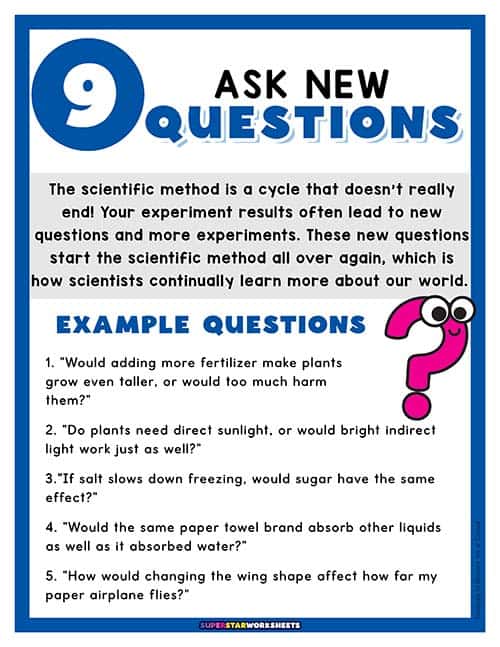
Scientific Method Ask New Questions
This poster explains step 9 of the scientific method, emphasizing how scientific inquiry is a continuous cycle. It contains specific examples of follow-up questions that might arise from completed experiments.
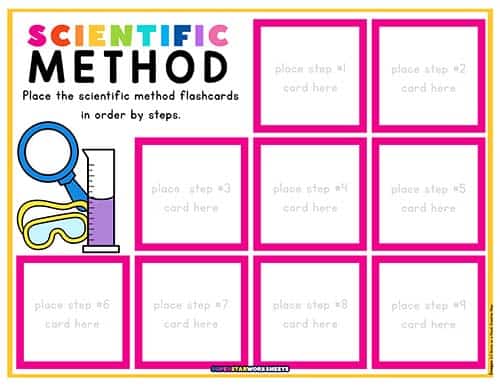
Scientific Method Learning Mat
This interactive learning mat challenges students to place the correct scientific method flashcards in the appropriate numbered spaces. Students can use this with the flashcards below for matching activities and step-by-step practice.
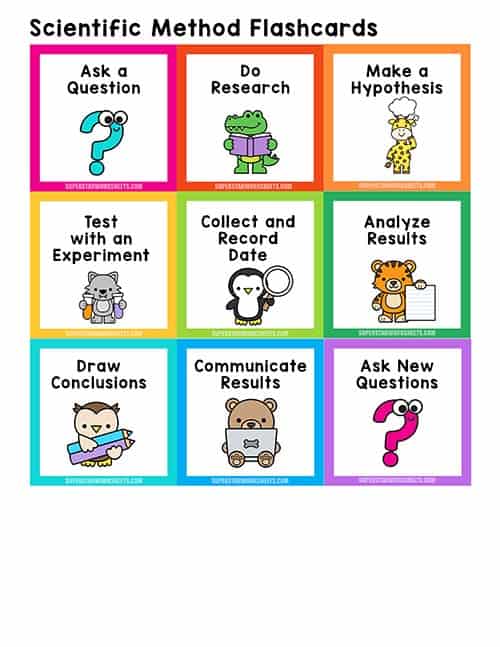
Scientific Method Flashcards
These colorful, cartoon-illustrated flashcards feature all nine steps of the scientific method with engaging animal characters representing each step. Each card displays a clear step title with a memorable visual cue, making them perfect for review games, memory practice, or classroom displays.
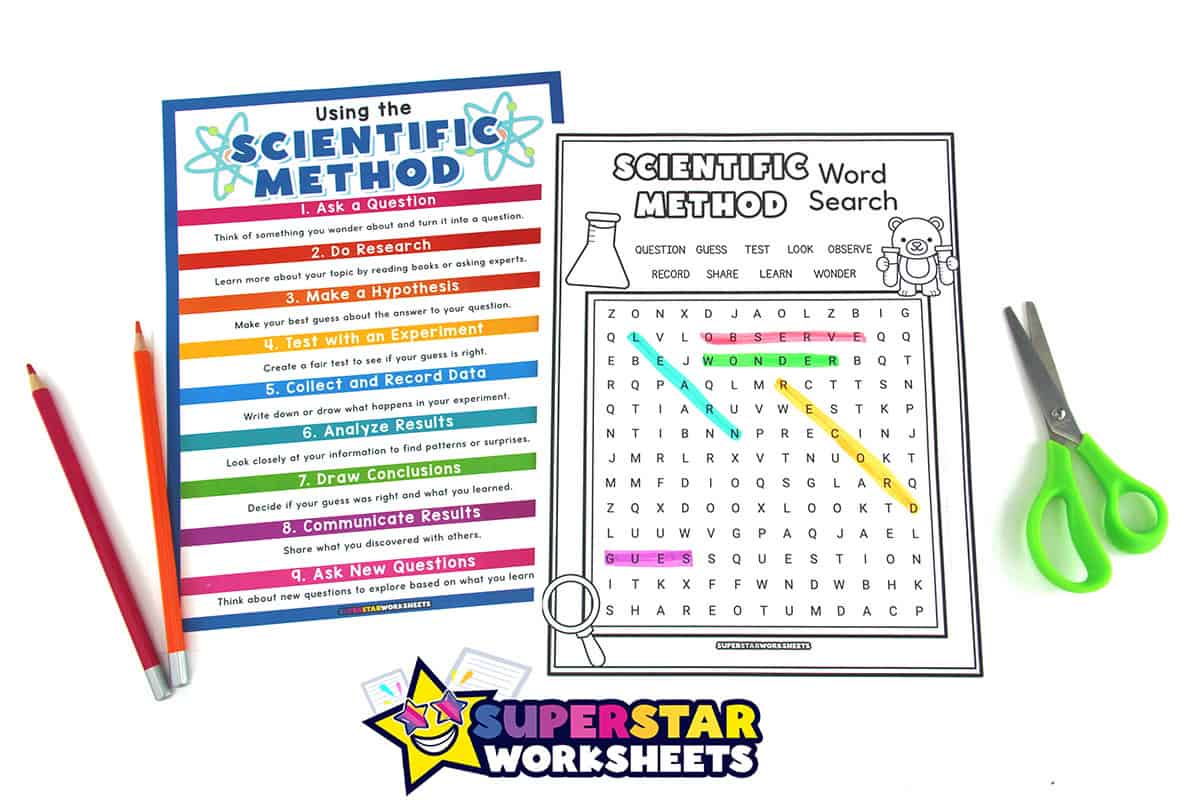
Why Teach the Scientific Method?
Teaching the scientific process to children develops essential life skills that extend far beyond science class. It cultivates critical thinking abilities, problem-solving skills, and logical reasoning that students will use throughout their academic careers and daily lives. The scientific method teaches children to question assumptions, seek evidence, and make informed decisions rather than jumping to conclusions.
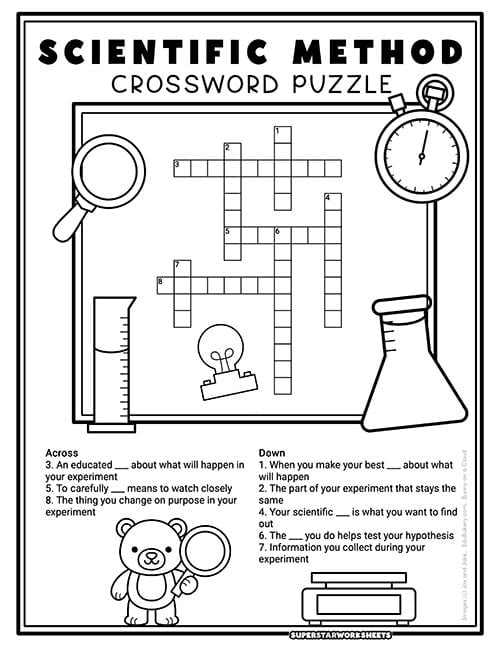
Scientific Method Crossword Puzzle
This engaging crossword puzzle reinforces scientific method vocabulary through fun wordplay and visual clues. Students solve clues related to key terms like hypothesis, observation, and experiment while building their understanding of scientific terminology.
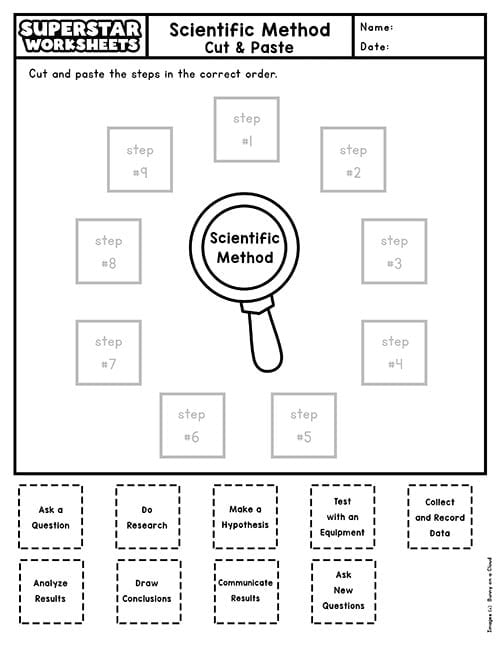
Scientific Method Cut & Paste
This hands-on activity allows students to practice sequencing the scientific method steps by cutting out individual step cards and pasting them in the correct order around a central magnifying glass. Students actively engage with the scientific process while developing fine motor skills through cutting and pasting.
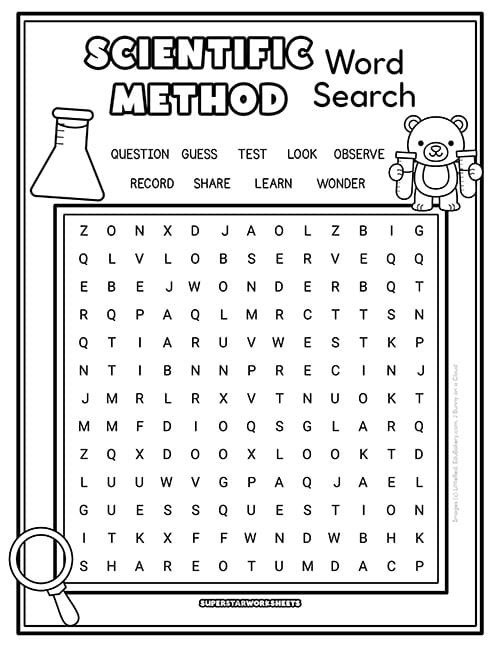
Scientific Method Word Search
This vocabulary-building word search puzzle incorporates key scientific method terms like “question,” “test,” “observe,” and “record” in a fun, searchable grid. Students hunt for hidden words while reinforcing their familiarity with scientific terminology and spelling.
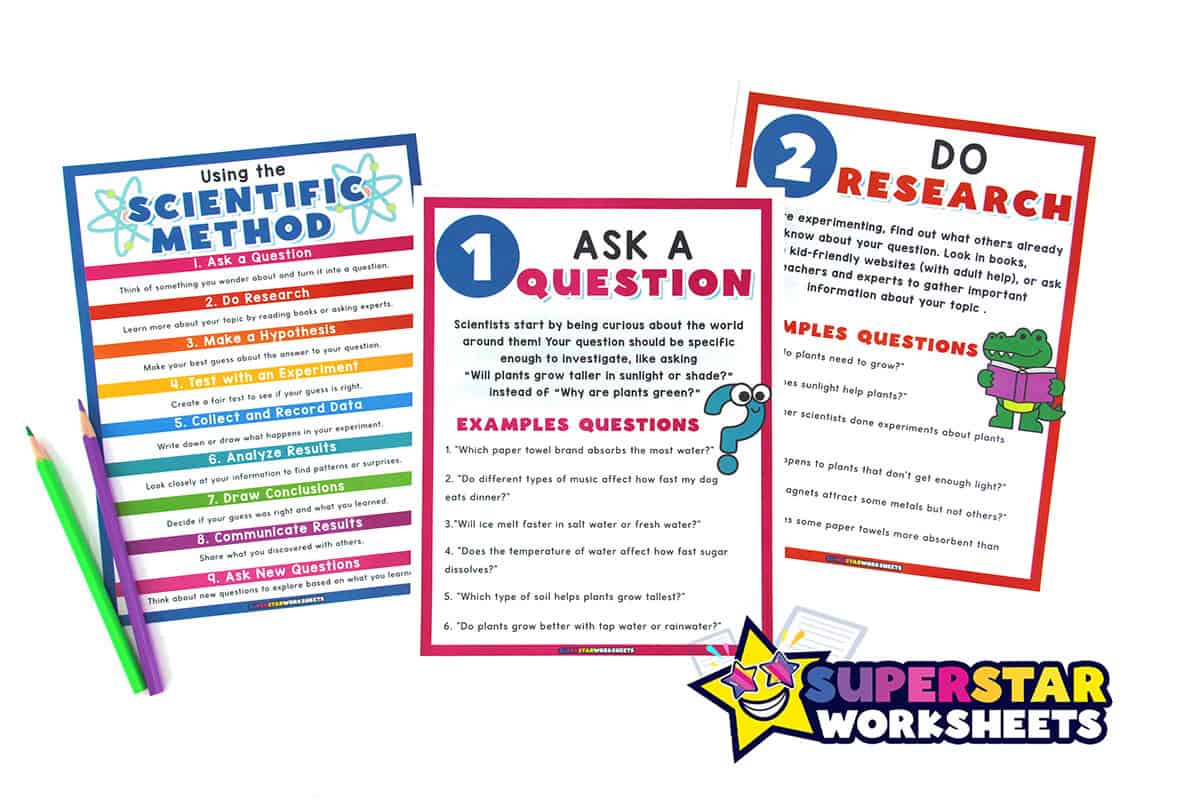
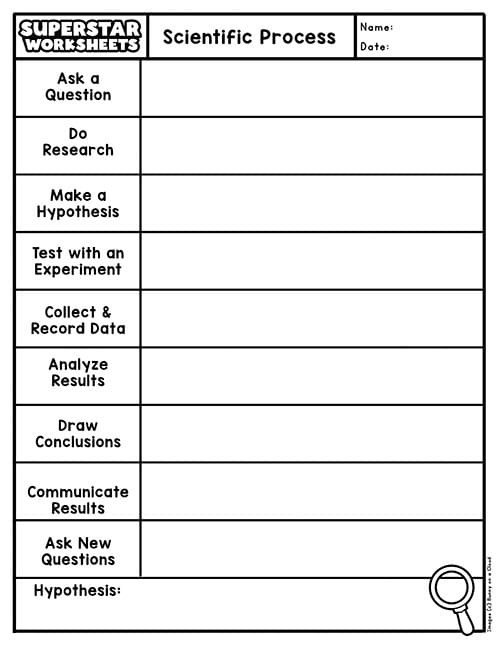
Scientific Method Journal Page
This structured worksheet provides students with a clear template to document their own scientific investigations from start to finish. Try using this page along with our free weather printables for even more classroom fun!
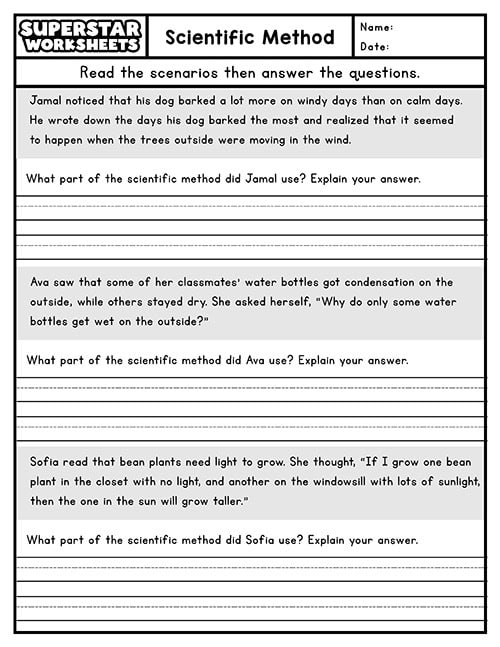
Scientific Method Scenarios Sheet
This critical thinking worksheet presents real-world scenarios where students must identify which part of the scientific method is being demonstrated. Three different situations involving everyday observations help students recognize scientific thinking in action and explain their reasoning.
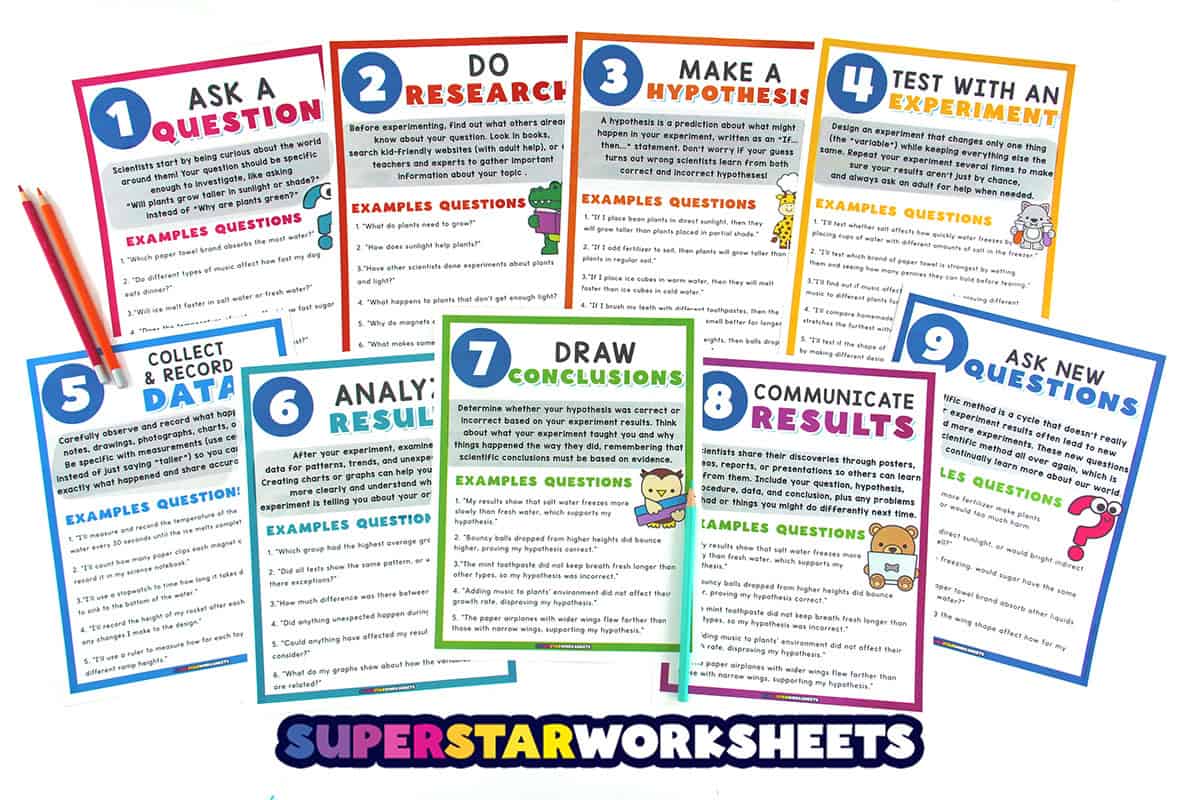

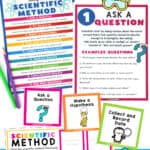
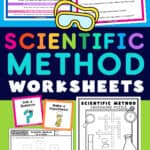

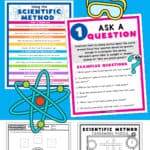
Leave a Reply